#SaveOurStudents: Advocacy Toolkit to Organize for Success
This toolkit equips advocates with the resources to mobilize state and local communities to resist these attacks and protect public education for current and future generations
EdTrust in Texas advocates for an equitable education for Black and Latino students and students from low-income backgrounds across the state. We believe in centering the voices of Texas students and families as we work alongside them for the better future they deserve.
Our mission is to close the gaps in opportunity and achievement that disproportionately impact students who are the most underserved, with a particular focus on Black and Latino/a students and students from low-income backgrounds.
EdTrust–New York is a statewide education policy and advocacy organization focused first and foremost on doing right by New York’s children. Although many organizations speak up for the adults employed by schools and colleges, we advocate for students, especially those whose needs and potential are often overlooked.
EdTrust-Tennessee advocates for equitable education for historically-underserved students across the state. We believe in centering the voices of Tennessee students and families as we work alongside them for the future they deserve.
EdTrust–West is committed to dismantling the racial and economic barriers embedded in the California education system. Through our research and advocacy, EdTrust-West engages diverse communities dedicated to education equity and justice and increases political and public will to build an education system where students of color and multilingual learners, especially those experiencing poverty, will thrive.
The Education Trust in Louisiana works to promote educational equity for historically underserved students in the Louisiana’s schools. We work alongside students, families, and communities to build urgency and collective will for educational equity and justice.
EdTrust in Texas advocates for an equitable education for historically-underserved students across the state. We believe in centering the voices of Texas students and families as we work alongside them for the better future they deserve.
The Education Trust team in Massachusetts convenes and supports the Massachusetts Education Equity Partnership (MEEP), a collective effort of more than 20 social justice, civil rights and education organizations from across the Commonwealth working together to promote educational equity for historically underserved students in our state’s schools.
This toolkit equips advocates with the resources to mobilize state and local communities to resist these attacks and protect public education for current and future generations

The Trump administration’s efforts to dismantle The U.S. Department of Education (ED) pose an unprecedented threat to public education, particularly for marginalized communities. The elimination of federal oversight would jeopardize civil rights protections, Title I funding, support for students with disabilities, and accountability measures essential for ensuring equity in education. Without these safeguards, students of color, students from low-income backgrounds, and other underserved student populations will face increased disparities in access to a quality education.
Moreover, the gradual elimination of ED – through executive orders and DOGE cuts – would have devastating effects on higher education. Pell Grants, federal student loans, and other critical programs that help millions of students access, afford, and persist in college would be at risk. Students from low-income backgrounds, first-generation college-goers, student veterans, and parenting students would face enormous barriers to accessing postsecondary education. The loss of federal oversight would also weaken accountability measures for for-profit colleges, leaving students vulnerable to predatory institutions that provide subpar education while increasing student debt burdens.
This toolkit equips advocates with the resources to mobilize state and local communities to resist these attacks and protect public education for current and future generations.
Read our insights on the latest White House directives
Find out how much federal education aid your state could lose
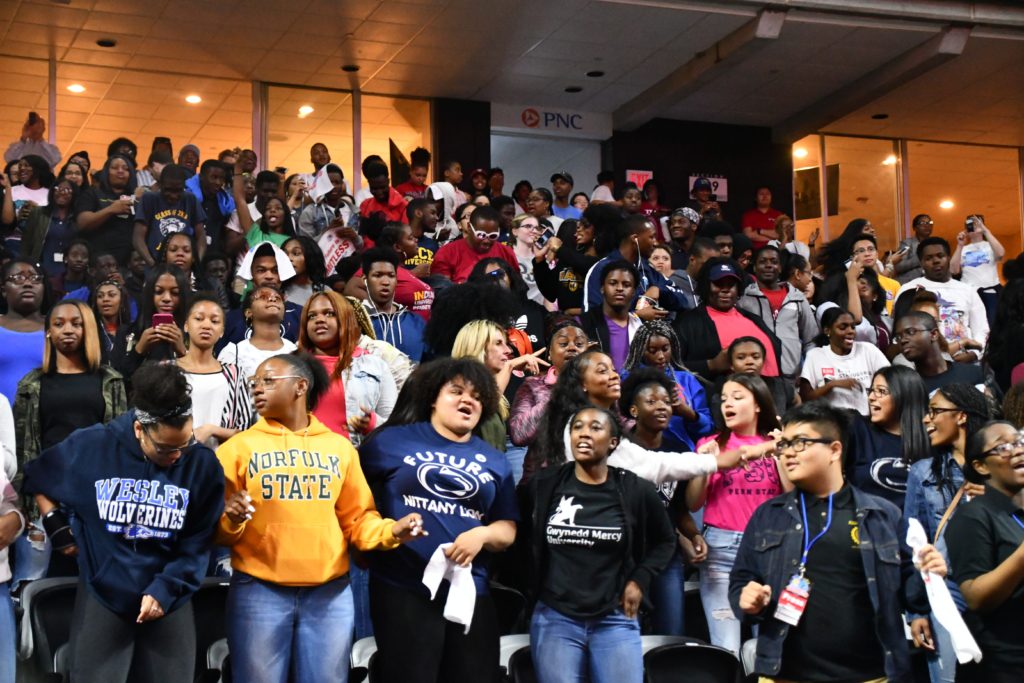
Learn more about how to engage with the media
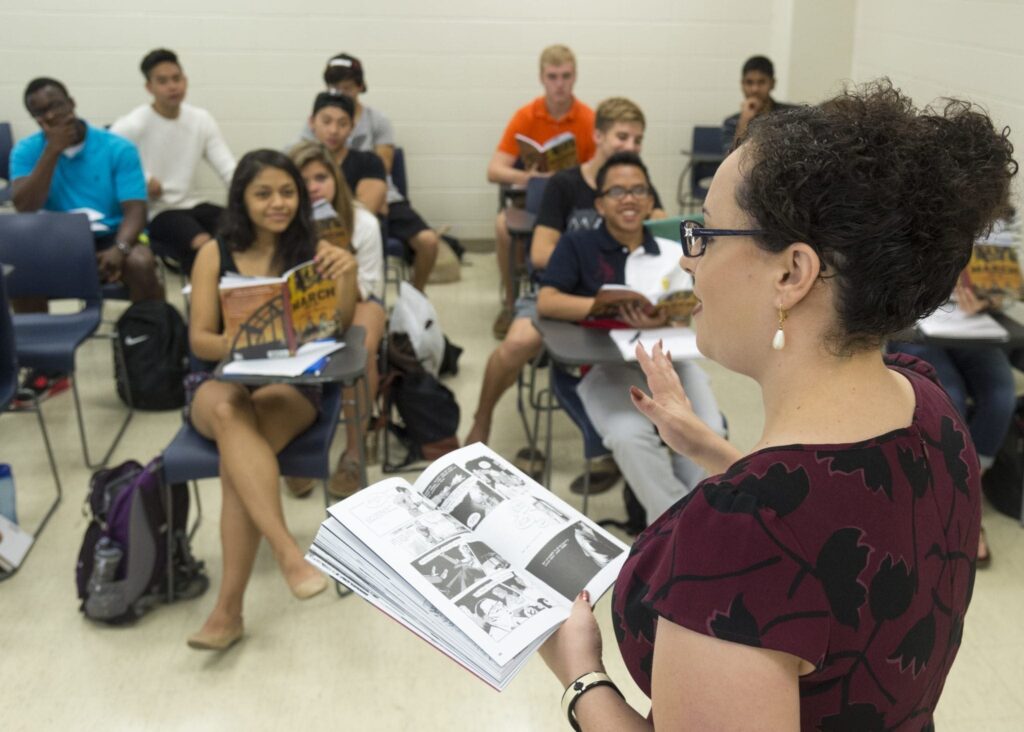
Families, educators, workforce leaders and advocates agree: Every student deserves a high-quality education, no matter their background, zip code, identity, or income level. Now, more than ever, we must strengthen — not weaken — our public schools, which serve the vast majority of America’s students.
The federal government has long played a critical role in ensuring equal educational opportunities for all students. Most Americans believe in maintaining that commitment, but we must take action to protect it. We must go beyond policy jargon and statistics—our advocacy must show the real impact on students’ lives.
If the Department of Education is eliminated, we will see devastating consequences:
We must act now to protect our nation’s students to prevent these harmful outcomes.

Use these hashtags consistently to unify the message and increase visibility across platforms:

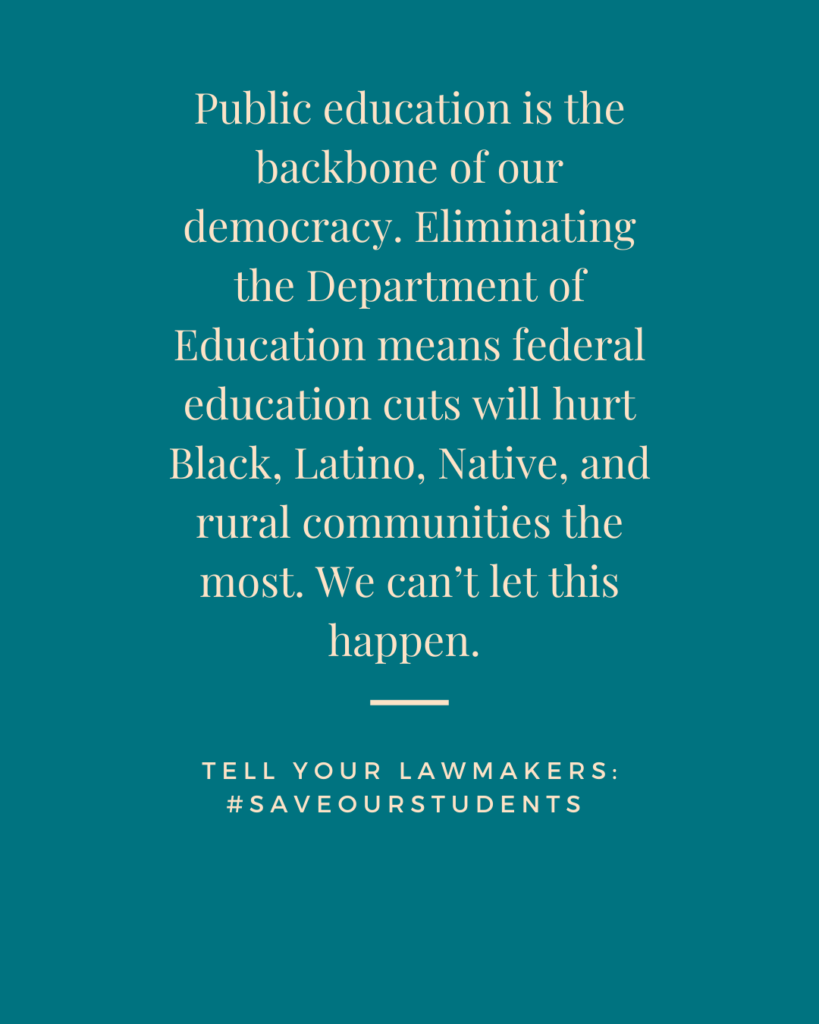
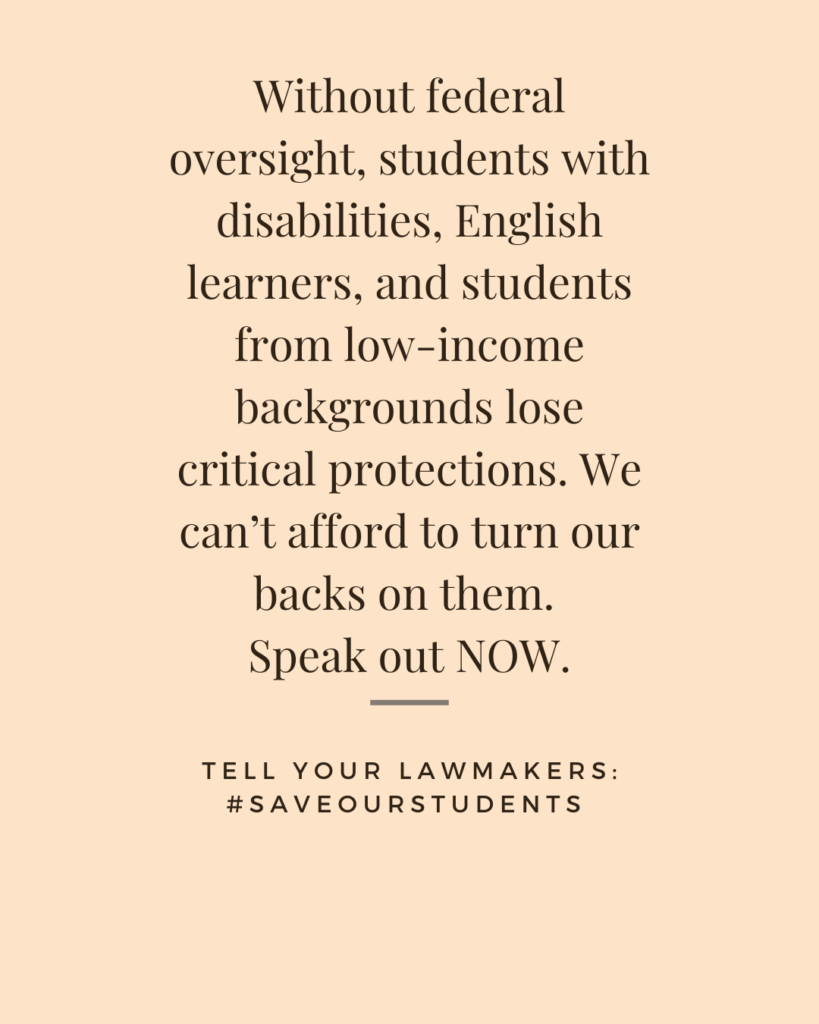
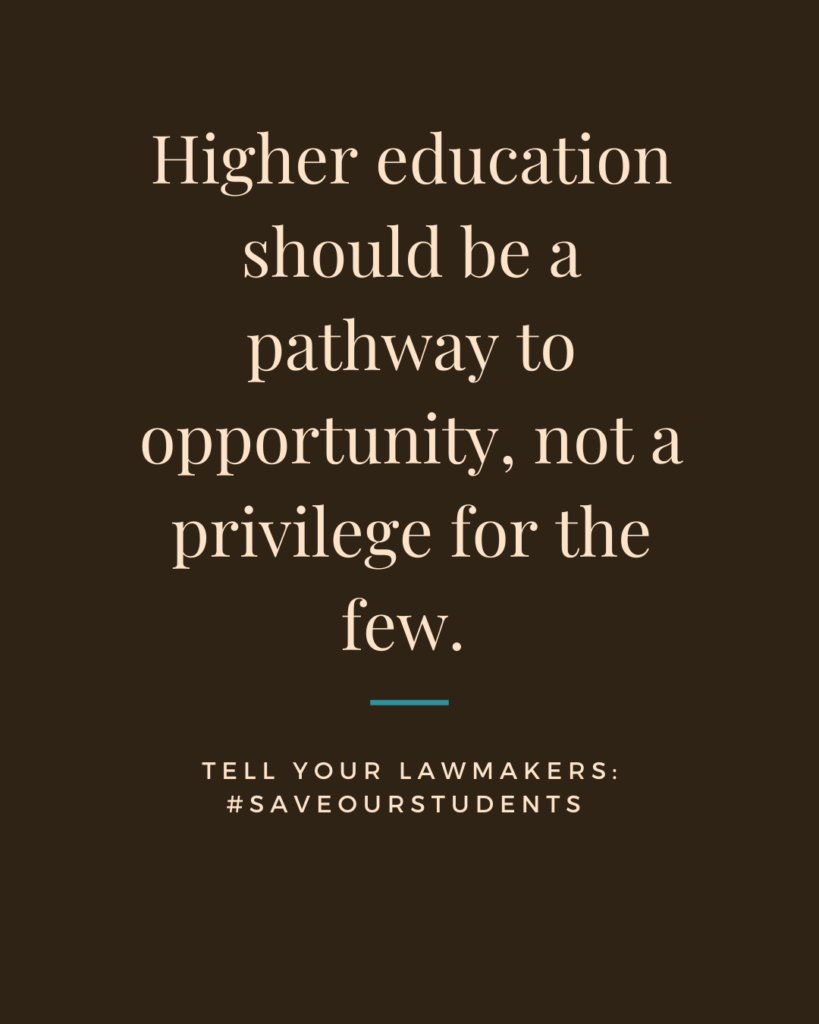
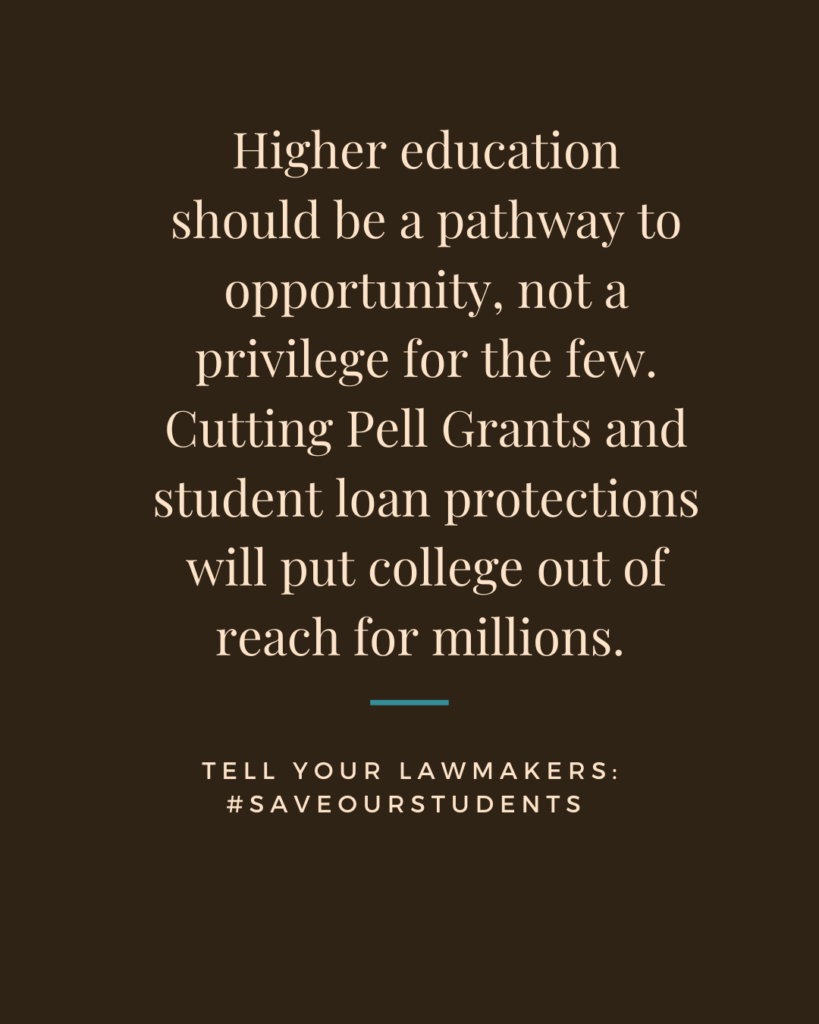
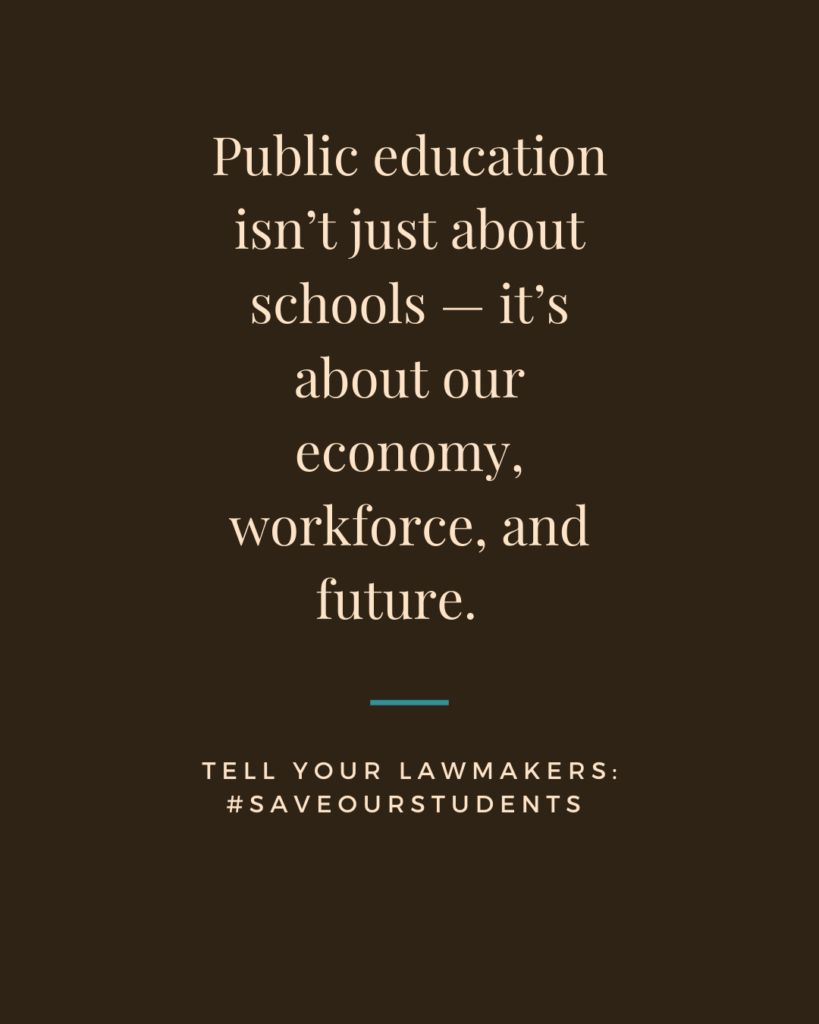

Every post should direct people to take action. Examples include:
